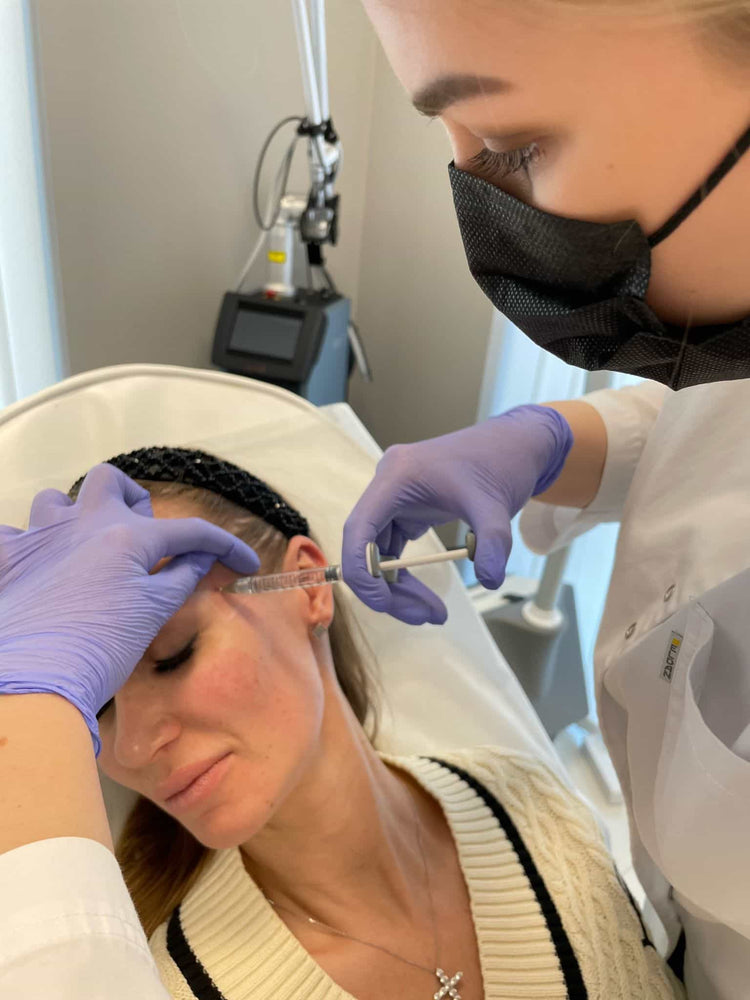Factors Affecting Filler Longevity
The longevity of dermal fillers used to enhance facial features, such as those placed at temples, can vary depending on several factors. These include the type of filler used, individual metabolism and skin elasticity, lifestyle habits, sun exposure, and the specific injection technique employed.
Dermal Filler Type
Dermal fillers are categorized into two main types: hyaluronic acid (HA) fillers and non-HA fillers. HA fillers, like Juvederm and Restylane, are popular choices for temple augmentation due to their ability to attract and hold water, providing a natural-looking lift. They tend to last 6-18 months.
Non-HA fillers, such as Sculptra Aesthetic, stimulate collagen production over time and can last longer than HA fillers, typically lasting up to two years or more.
Lifestyle and Habits

The longevity of temple fillers in Kingston Upon Thames is influenced by a combination of factors. Understanding these factors can help you make informed decisions about your treatment and manage expectations regarding the duration of results.
- Filler Type: As mentioned, HA fillers like Juvederm and Restylane generally last 6-18 months.
- Lifestyle and Habits: Sun exposure, smoking, and excessive alcohol consumption can all degrade collagen and hyaluronic acid, potentially shortening the lifespan of your temple fillers.
- Skin Elasticity: Individuals with naturally more elastic skin may experience longer-lasting results as the filler integrates better and is less susceptible to breakdown.
- Metabolism: Faster metabolisms can lead to quicker filler degradation.
- Injection Technique: The skill of the practitioner administering the fillers plays a crucial role in ensuring optimal placement and longevity.
Individual Skin Characteristics
The longevity of dermal fillers used to enhance facial features, such as those placed at temples, can vary depending on several factors. These include the type of filler used, individual metabolism and skin elasticity, lifestyle habits, sun exposure, and the specific injection technique employed.
Dermal fillers are categorized into two main types: hyaluronic acid (HA) fillers and non-HA fillers. HA fillers, like Juvederm and Restylane, are popular choices for temple augmentation due to their ability to attract and hold water, providing a natural-looking lift. They tend to last 6-18 months.
Non-HA fillers, such as Sculptra Aesthetic, stimulate collagen production over time and can last longer than HA fillers, typically lasting up to two years or more.
The longevity of temple fillers in Kingston Upon Thames is influenced by a combination of factors. Understanding these factors can help you make informed decisions about your treatment and manage expectations regarding the duration of results.

- Filler Type
- Lifestyle and Habits
- Skin Elasticity
- Metabolism
- Injection Technique
Average Lifespan of Temple Fillers
The duration of temple filler results in Kingston Upon Thames is influenced by several key factors.
Minimal Volume Placement
Temple fillers typically last between six months and two years or more, depending on the type of filler used.
Hyaluronic acid (HA) fillers are the most common type used for temple augmentation and generally last six to eighteen months.
Non-HA fillers, such as Sculptra Aesthetic, stimulate collagen production and can provide longer-lasting results, often lasting up to two years or more.
Moderate Volume Placement
The duration of temple filler results in Kingston Upon Thames is influenced by several key factors.
Temple fillers typically last between six months and two years or more, depending on the type of filler used.
Hyaluronic acid (HA) fillers are the most common type used for temple augmentation and generally last six to eighteen months.
Non-HA fillers, such as Sculptra Aesthetic, stimulate collagen production and can provide longer-lasting results, often lasting up to two years or more.
Maximum Volume Placement
The longevity of temple fillers in Kingston Upon Thames depends on various factors. HA fillers typically last six to eighteen months, while non-HA fillers like Sculptra Aesthetic can last up to two years or more.
Factors influencing the lifespan of temple fillers include filler type, individual metabolism and skin elasticity, lifestyle habits (like sun exposure and smoking), and the practitioner’s injection technique.
The maximum volume of filler that can be safely placed in temples varies depending on individual anatomy and the injector’s judgment.
Maintaining Long-lasting Results
Maintaining long-lasting results is a key consideration for anyone considering dermal fillers for temple augmentation. The duration of these results varies depending on several factors, including the type of filler used, individual skin characteristics, lifestyle habits, and the skill of the practitioner.
Sunscreen Usage
To maximize the longevity of your temple fillers in Kingston Upon Thames, it’s crucial to understand the factors that influence their duration.
The primary determinant is the type of filler used. Hyaluronic acid (HA) fillers, such as Juvederm and Restylane, are known for their hydrating properties and typically last 6-18 months. Non-HA fillers, like Sculptra Aesthetic, stimulate collagen production and can offer longer-lasting results, often extending up to two years or more.
Beyond filler type, individual factors play a significant role. Skin elasticity, metabolism, and lifestyle habits all contribute to the longevity of the results. Maintaining healthy skin by protecting it from sun damage, avoiding smoking, and limiting alcohol consumption can help extend the lifespan of your temple fillers.
The skill of the practitioner administering the fillers is also paramount. A skilled injector will carefully assess your facial anatomy and individual needs to determine the optimal placement and volume of filler for a natural-looking outcome that lasts as long as possible.
Avoiding Facial Massage
To maximize the longevity of your temple fillers in Kingston Upon Thames, it’s crucial to understand the factors that influence their duration.
The primary determinant is the type of filler used. Hyaluronic acid (HA) fillers, such as Juvederm and Restylane, are known for their hydrating properties and typically last 6-18 months. Non-HA fillers, like Sculptra Aesthetic, stimulate collagen production and can offer longer-lasting results, often extending up to two years or more.
Beyond filler type, individual factors play a significant role. Skin elasticity, metabolism, and lifestyle habits all contribute to the longevity of the results. Maintaining healthy skin by protecting it from sun damage, avoiding smoking, and limiting alcohol consumption can help extend the lifespan of your temple fillers.
The skill of the practitioner administering the fillers is also paramount. A skilled injector will carefully assess your facial anatomy and individual needs to determine the optimal placement and volume of filler for a natural-looking outcome that lasts as long as possible.
Touch-up Treatments
Maintaining long-lasting results with temple fillers involves understanding several key factors. The type of filler used is paramount; hyaluronic acid (HA) fillers like Juvederm and Restylane typically last 6 to 18 months, while non-HA fillers such as Sculptra Aesthetic can offer longer-lasting results, sometimes up to two years or more.
Individual factors also play a significant role. Skin elasticity, metabolism, and lifestyle habits can all influence how long the filler lasts. Protecting your skin from sun damage, avoiding smoking, and limiting alcohol consumption can help prolong the effects of your temple fillers.
The skill of the practitioner administering the filler is crucial for achieving optimal and long-lasting results. A skilled injector will carefully assess your facial structure and individual needs to determine the best placement and volume of filler for a natural-looking outcome that endures.
Regular touch-up treatments are often necessary to maintain the desired look and refresh the results as the filler gradually breaks down over time. The frequency of these touch-ups will depend on the individual and the type of filler used.
- Downturned Smile Treatment Near Outwood, Surrey - September 28, 2025
- Is It Safe To Take Kratom Capsules Long-Term? - September 27, 2025
- Dermal Fillers Near Blackheath, Surrey - September 27, 2025
